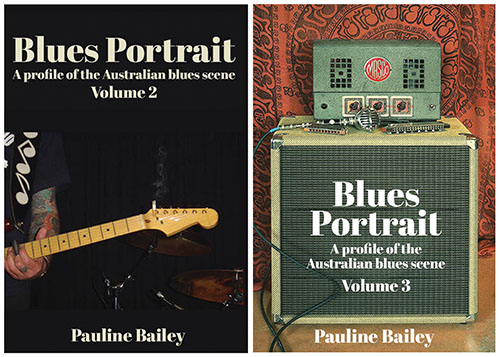You can come up with your own definition of the blues but if you’re lazy, try this one from the BBC:
The main features of blues include: specific chord progressions, a walking bass, call and response, dissonant harmonies, syncopation, melisma and flattened ‘blue’ notes. Blues is known for being microtonal, using pitches between the semitones defined by a piano keyboard. This is often achieved on electric guitar using a metal slide for a whining effect. As a result, blues can be heavily chromatic.
You might think that description's little antiseptic but to give the Beeb its due credit, it does go on to acknowledge the role of emotion:
Blues gets its name from its original association with melancholy subjects and sounds: when we have ‘the blues’, we’re feeling sad. However, blues has since developed to address other subjects and emotions, adopting a wider purpose of ‘chasing the blues away’ with music.
Melbourne author Pauline Bailey is crazy brave. Crazy because she’s self-published these tomes. Brave because she’s tackled the assignment of interviewing 80-plus musicians (mostly Australian) about the blues and themed her books as such.
The author’s taken the approach that the books are not so much about the blues but how the form influenced its subjects. Pauline is no stranger to this writing caper. She was the ghostly hand behind Melbourne musician Kim Volkman’s two disarmingly honest and excellent autobiographical books.
About those blues purists. They would be gagging to see people like Henry Rollins, Kim Salmon, Penny Ikinger and Tim Rogers, Fiona Lee Maynard, Jack Howard, Angry Anderson and Lachey Doley in there. Even Triple J faves like Dallas Frasca.
There’s plenty of space devoted to players from a traditional blues background like Continental Robert Susz, Ray Beadle, The Foreday Riders and Nathan Cavaleri, to name some better-known ones. The beauty of “Blues Portrait” is that it doesn’t get hung up on boundaries. Fuck me, there’s a picture of Dave Leslie (Baby Animals) in a Thin Lizzy T-shirt.
There’s equal parts rock and roll and blues in the output of a Dennis Wilson, a Russell Morris , a Dave Tice or a Mal Eastick to make that approach eminently sensible. As Muddy Waters observed: “The Blues Had a Baby and They Called it Rock and Roll.”
These are solid tomes. Large format softcover efforts that run to more than 350 pages apiece, they’re generously illustrated.
There’s also a format to “Blues Portrait”. The author sets the scene with a brief summary of the subject musician’s career to date, and then leaves it to them to fill out the pen picture in their own words. It’s up close and personal and works stunningly well.
Pick up a chapter, read it and then dip into another later on. If you’re a bloke, you might term the volumes as “a dunny read” but that would be stereotyping. Wash your hands. Regardless.
Each vignette is brimful of factoids. The interviewing style seems to have been light touch but you detect a little guidance has been applied and it’s been assisted by a deep knowledge of the subject matter. The “real” blues players have an appreciation for the music’s history and each chapter will send you cross-referencing or looking for the source, if you let it.
There are two themes at play. The first is the reverence the older players had, in their early years, for the motherlode – which in nine cases out of 10 was the opportunity of experiencing US blues greats first-hand - in much the same way as British bands like The Yardbirds and the Stones did.
The second is the all-pervading impacts of a global pandemic and how it’s impacted each interviewee. Some retreated to the bush. Others got extra creative. Their outlook for the future ranges from mildly optimistic to downright, well, bluesy.
Two important and compelling additions to the collective library relating to Auatralian music.



 Blues Portrait Volume 2 by Pauline Bailey
Blues Portrait Volume 2 by Pauline Bailey 